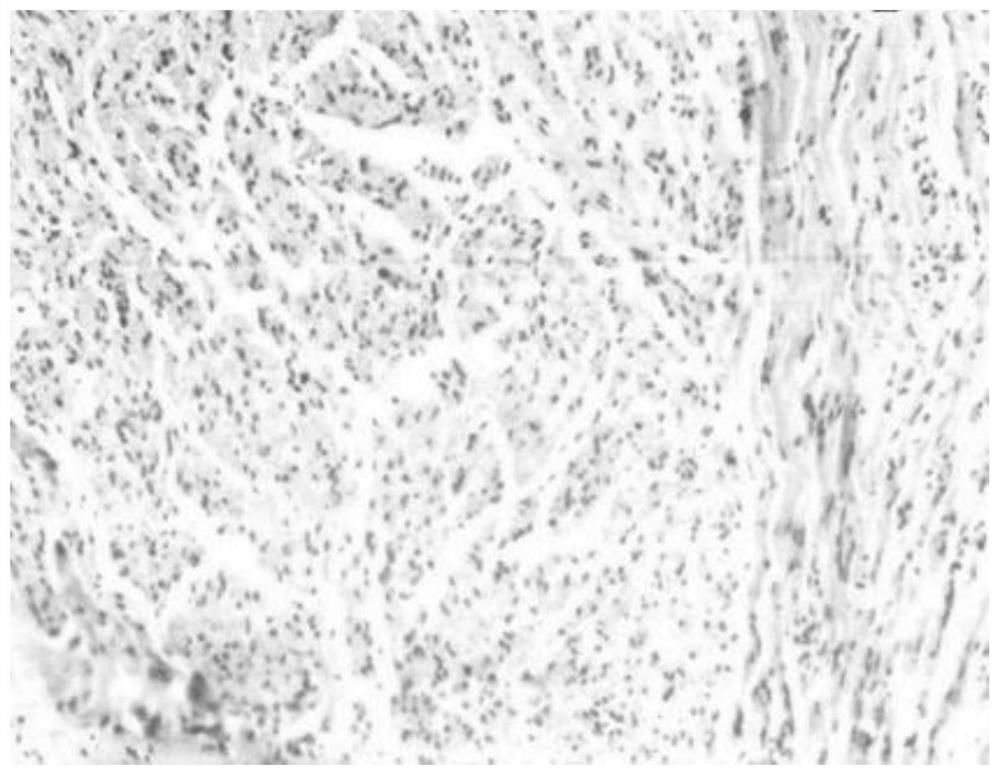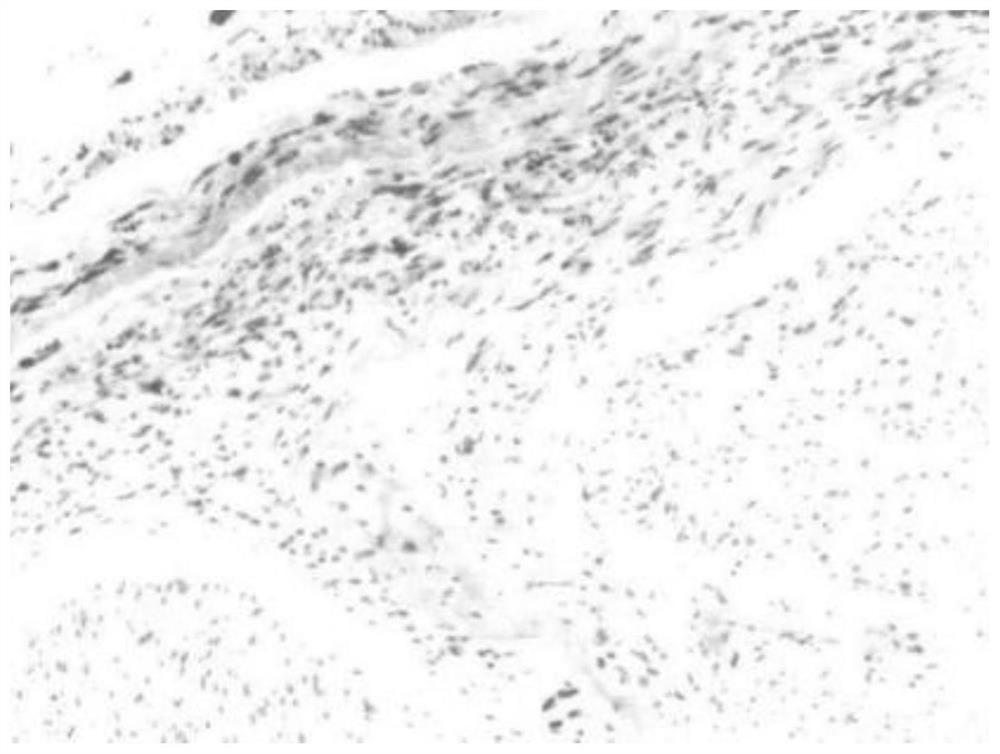An intelligently regulated absorbable peripheral nerve repair catheter and preparation method thereof
A peripheral nerve and catheter technology, applied in the medical field, can solve the problems of neglecting the degradation cycle of polymer materials, complex preparation methods of microspheres, and long sensitive slow release cycle, so as to avoid nerve growth obstruction and achieve on-demand precise self-regulated release. , is conducive to the enrichment effect
- Summary
- Abstract
- Description
- Claims
- Application Information
AI Technical Summary
Problems solved by technology
Method used
Image
Examples
Embodiment 1
[0036] Example 1 Peripheral nerve repair catheter loaded with four-arm PEG-CHO modified polypeptide sustained-release microspheres
[0037] Catheter structure distribution
[0038]
[0039]
[0040] The catheter preparation method comprises the following steps:
[0041] (1) Preparation of four-arm PEG-CHO modified polypeptide sustained-release microspheres
[0042] Weigh 50 parts of dextran T-500 and dissolve in 150ml PBS buffer, fully swell; weigh 0.001 parts of nerve growth factor and 2 parts of sensitive peptide MHVRRR and dissolve them in 100ml of deionized water, then add 20 parts of Four-arm PEG-CHO, fully dissolved, add NaHCO 3 The solution was adjusted to pH=6, and NaCNBH was added after stirring for 1 h 3 15 parts, continue to stir for 5 hours, then add the above solution to the dextran solution, vortex at 3000r / min for 2 minutes, let stand for 2 hours, repeat three times, wash and centrifuge to collect microspheres, and freeze-dry to obtain plasmin-sensitive...
Embodiment 2
[0049] Example 2: Peripheral nerve repair catheter loaded with eight-arm PEG-CHO modified polypeptide sustained-release microspheres
[0050] Catheter structure distribution
[0051]
[0052] The preparation method of the repair catheter comprises the following steps:
[0053] (1) Preparation of eight-arm PEG-CHO modified polypeptide sustained-release microspheres
[0054] Weigh 100 parts of dextran T-500 and dissolve in 200ml PBS buffer, fully swell; weigh 0.01 parts of nerve growth factor and 10 parts of sensitive peptide MHVRRR and dissolve in 150ml of deionized water, then add 100 parts of Eight-arm PEG-CHO, fully dissolved, add NaHCO 3 The solution was adjusted to pH=6, and NaCNBH was added after stirring for 1 h 3 20 parts, continue to stir for 5 hours, add the above solution to the dextran solution, vortex at 3000r / min for 2 minutes, let stand for 2 hours, repeat three times, wash and centrifuge to collect microspheres, and then freeze-dry to obtain plasmin-sensit...
Embodiment 3
[0061] Example 3 Peripheral nerve repair catheter loaded with double-arm PEG-CHO modified polypeptide sustained-release microspheres
[0062] Catheter structure distribution
[0063]
[0064] The preparation method of the repair catheter comprises the following steps:
[0065] (1) Preparation of double-arm PEG-CHO modified polypeptide sustained-release microspheres
[0066] Weigh 60 parts of dextran T-500 and dissolve in 100ml PBS buffer, fully swell; weigh 0.05 parts of brain-derived neurotrophic factor and 0.5 parts of sensitive peptide TQRRLRK and dissolve them in 120ml of deionized water, then add 300 parts of average molecular weight For 1000 double-armed PEG-CHO, fully dissolve, add NaHCO 3 The solution was adjusted to pH=5, and NaCNBH was added after stirring for 1 h 3 10 parts, continue to stir for 5 hours, add the above solution to the dextran solution, vortex at 3000r / min for 2 minutes, let stand for 2 hours, repeat three times, wash and centrifuge to collect m...
PUM
| Property | Measurement | Unit |
|---|---|---|
| diameter | aaaaa | aaaaa |
| pore size | aaaaa | aaaaa |
| pore size | aaaaa | aaaaa |
Abstract
Description
Claims
Application Information
 Login to View More
Login to View More - R&D
- Intellectual Property
- Life Sciences
- Materials
- Tech Scout
- Unparalleled Data Quality
- Higher Quality Content
- 60% Fewer Hallucinations
Browse by: Latest US Patents, China's latest patents, Technical Efficacy Thesaurus, Application Domain, Technology Topic, Popular Technical Reports.
© 2025 PatSnap. All rights reserved.Legal|Privacy policy|Modern Slavery Act Transparency Statement|Sitemap|About US| Contact US: help@patsnap.com



